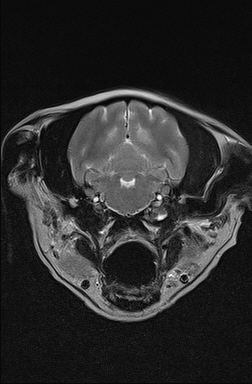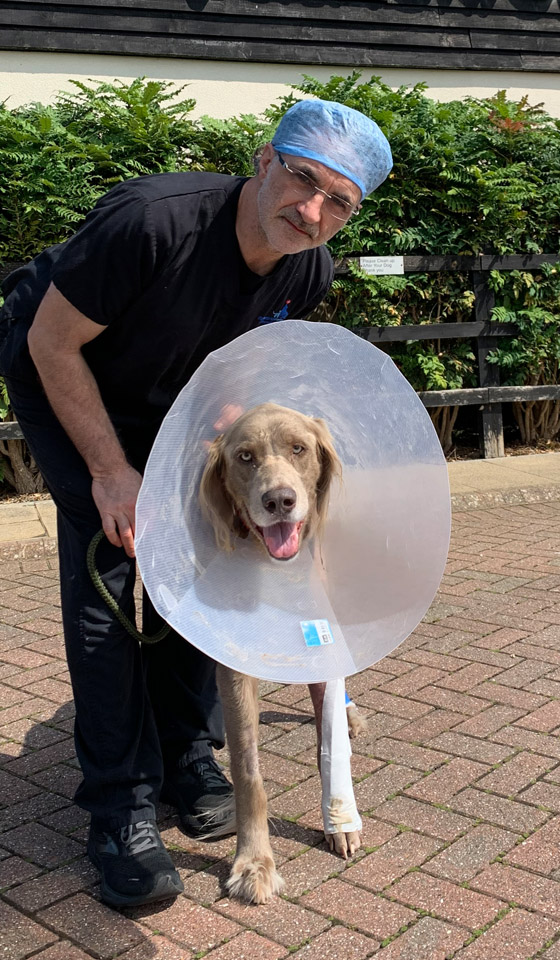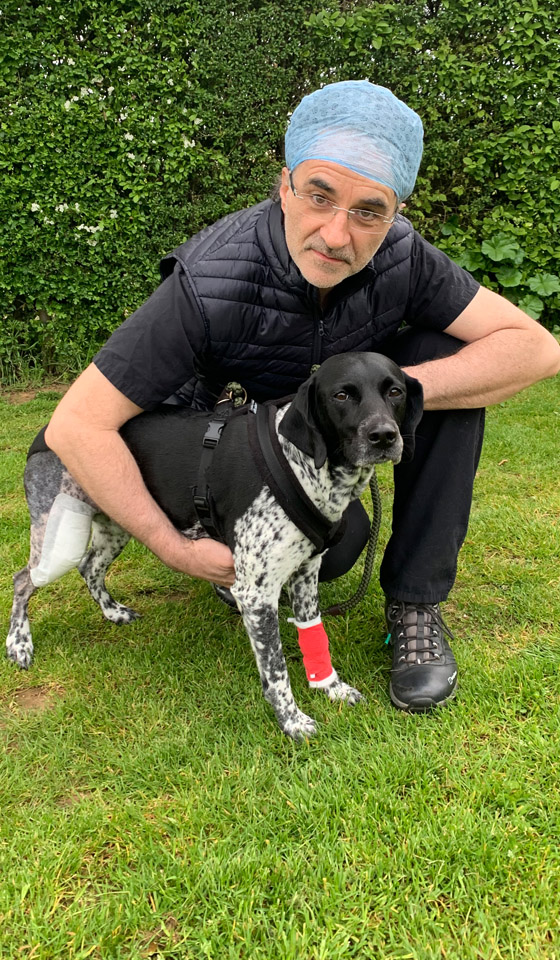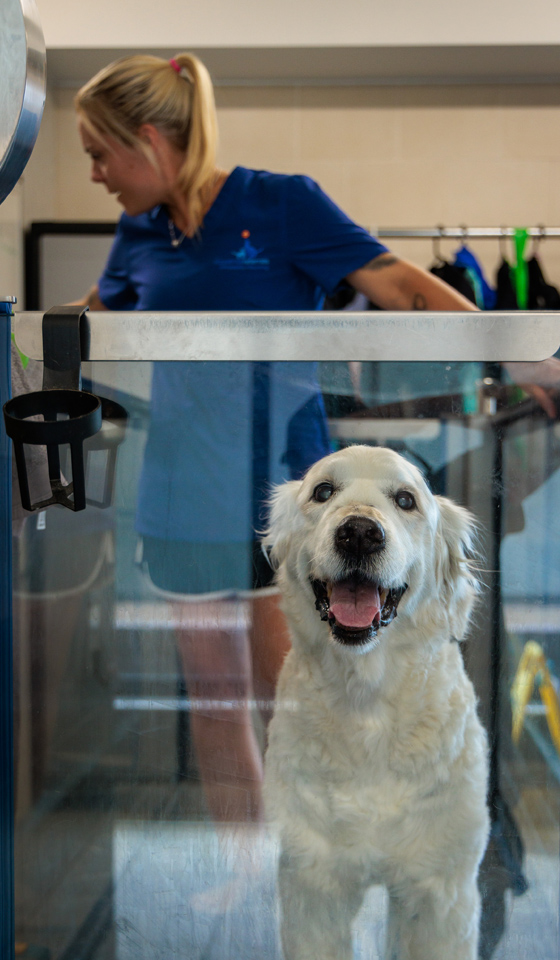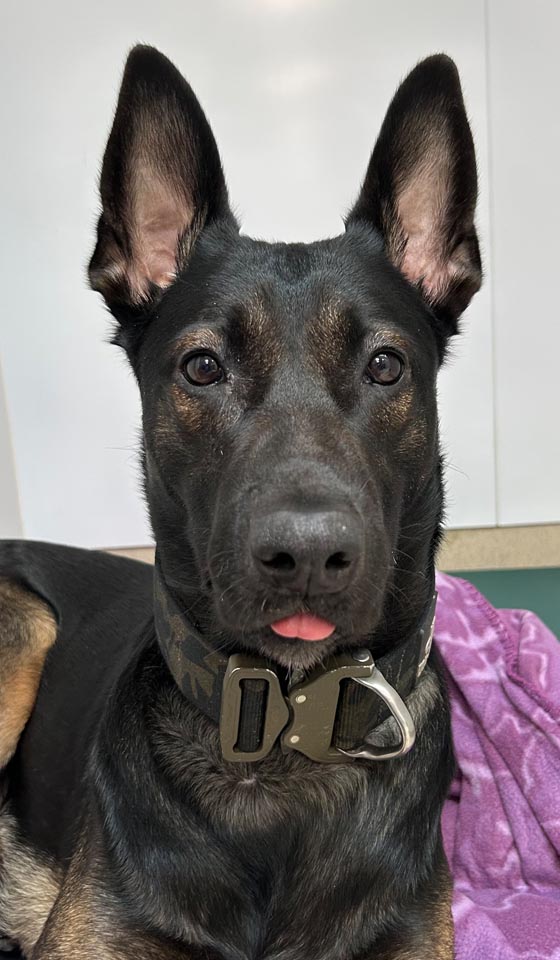Rehabilitation has an important role to play when caring for a pet affected by vestibular disease. Our chartered physiotherapist initially carries out a thorough assessment of your dog and then formulates treatment aims and goals which is compiled into a rehabilitation treatment plan uniquely designed for your dog. The degree to which an individual is affected can vary from patient to patient, possible aims and treatment options are listed below. It is essential that ongoing evaluation and adjustment of the care programme takes place.
Aims of rehabilitation
In the initial days following diagnosis of vestibular disease:
- Provide supportive management of postures and transferring from one position to another
- Increase sensation and awareness of body position
- Maintain soft tissue flexibility
Following on from this and depending on your pet’s progress, the aims might include:
- Improve core stability
- Further raise awareness of body position and posture and posture
- Advance functional transfers of weight
- Facilitate supportive gait patterns
Once good recovery is established further aims are defined:
- Continue to strengthen core muscles
- Further enhance gait patterns including pace
- Enhance exercise tolerance and cardiovascular fitness
- Return to normal function or how to manage any residual disabilities
Physiotherapy treatment options
A major component of physiotherapy treatment is the advice that can be given especially in the initial phase after diagnosis. Handling techniques, home environment advice, exercise restriction and the use of assistive devices are essentials and will be taught and demonstrated by your pet’s physiotherapist.
Soft tissue massage and sensory stimulation are key and can be taught so you are able to perform them at home. In addition, an appropriate home exercise program (HEP) can be invaluable even early on. Specific exercise therapy allows stimulation of body awareness and strengthening of essential muscle groups. Hydrotherapy can be introduced for strengthening, gait re-education, core stability promotion and improving cardiovascular fitness.
It is necessary however that your pet’s home exercise and physiotherapy programme is assessed and adjusted frequently to ensure the correct treatment plan and care is being provided. This will be performed throughout your pet’s hospitalisation (should that be required), or through our outpatient rehabilitation centre here at the hospital.
The following table gives an example of a rehabilitation plan which may be designed for the management of a patient with vestibular disease:*
| Timescale | Physiotherapy aims | Physiotherapy treatment options |
| 0-2 weeks | Management (if at home) including support posture and transfers | Correct positioning. Advise owners about correct handling techniques. Advise re: floor surfaces if at home, advice re: slings or walking aids if required/exercise restriction. |
| Increase sensation and awareness of body position | Soft tissue massage, proprioceptive facilitation | |
| 2-4 weeks | Improve core stability | Home exercise programme |
| Progress awareness of body position, maintaining soft tissue length and flexibility. | Home exercise programme to progress proprioceptive facilitation and sensory input techniques e.g. brushing, massage, tapping, passive mobilisations and stretches. | |
| 4-6 weeks | Increase sensation and awareness of body position and improve gait. | Home exercise programme to include gait and balance challenges such as weave poles, steps and gradients. |
| 6-12 weeks | Increase exercise tolerance | Advise re: progressive exercise, increasing exercise levels, consider land and water-based exercises. |
| Continue to increase core stability | Home exercise programme | |
| 12 weeks + | Return to full function or advise re: management of residual deficits described by neurologist. | Progress to off-lead exercise and previous exercise level |
*Please note that rehabilitation plans should only be followed under the guidance of a qualified rehabilitation professional, who will be able to provide a tailored plan based on the individual patient’s rehabilitation needs.
3 minute read
In this article
